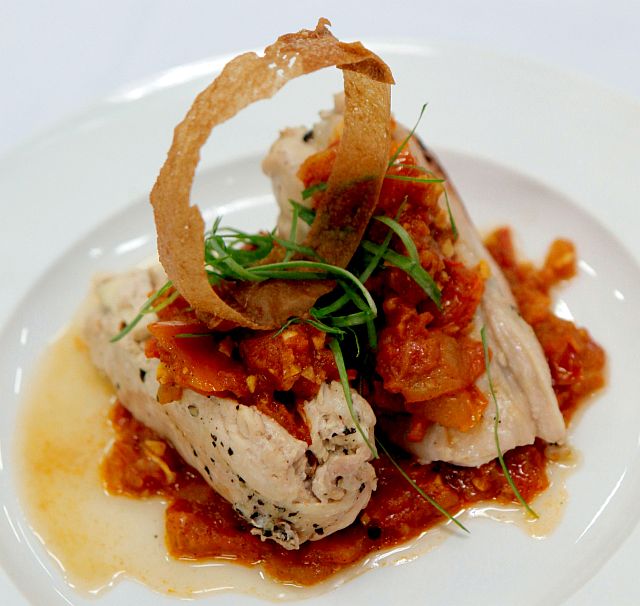
1st PLACE – Chicken Breast in White Sauce with Sofrito.
DASHI and Umami are considered the heart of Japanese cuisine.
Dashi is the stock that forms the foundation of Japanese cookery.
There are different kids of dashi, but the most superior and best loved is kombu (kelp seaweed) and katsuobushi (dried bonito flakes) boiled over a period of time, similar to the Western bouillon.
Umami is the single word that holds the key to the magic of dashi. In 1902, Prof. Kikunae Ikeda discovered this taste in dashi he identified as glutamate, then not accounted for in four basic tastes of sweet, sour, bitter and salty. Glutamates are flavor-enhancing amino acids naturally occurring in vegetables, meats, fish, cheeses, mushrooms and fermented foods. Umami means savory in Japanese and is now considered as the fifth basic taste. Celebrity Chef Nobuyuki Matsuhisa refers to it as the origin of “deliciousness.”
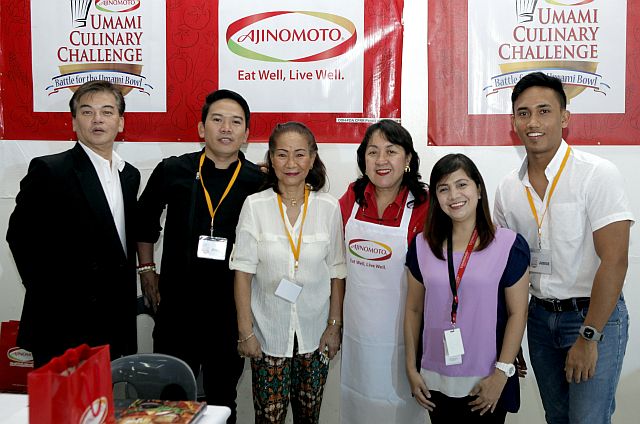
The judges: (from left) GM Limketkai Luxe Hotel Jerome dela Fuente, Chef Dennis Uy, Aissa A. dela Cruz, Chef Nancy Reyes-Lumen (Umami Culinary Competition Director), Ajinomoto Culinary Service Manager Sofia Conejos and nutritionist/dietician Soje Tapulada. Not in photo is Cebu Provincial Tourism Officer Jose Costas.
In May 1909, the commercial production of monosodium glutamate or MSG created by Dr. Ikeda started under the brand name Aji-No-Moto, which means “essence of taste.” More than 100 years later, Aji-No-Moto has become a household name.
The Ajinomoto Umami Culinary Challenge (UCC) is an interschool cooking competition that focuses on the use of umami in enhancing the taste of food. UCC Competition Director “Adobo Queen” Chef Nancy Reyes Lumen of the Aristocrat fame is behind the activity that includes competition for the Best Filipino Umami Competition and My Own Umami Creation. UCC–Visayas winners will compete with with the UCC-Luzon winners in Manila.
Being a third-time judge for the UCC-Visayas, I had another privilege of working with four other judges for the Best Filipino Umami Dish.
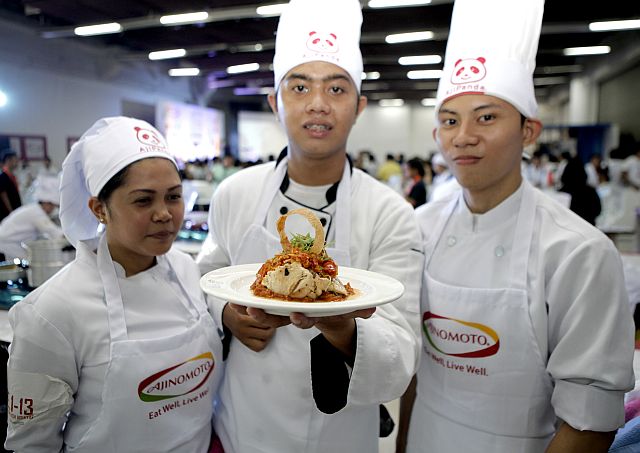
UC Banilad – 1st place
winning dish.
There were at least 22 entries, so picking out the best three entries was very challenging. The third placer, “Pinug-ang Lambayan,” created by University of Cebu–Mandaue, is a Bicolano dish of swimming crabs or “lambay” and prawns cooked in freshly squeezed coconut milk, ground red chilis and Ajinomoto Ginisa flavor.
It was a simple dish that focused on the freshness of the ingredients.
Second place was a more complicated dish prepared by Hercor College of Roxas City, “Maumaming Lengua Inasal at Ensaladang Pako.” Cubes of ox tongue were marinated in soy sauce, calamansi, pineapple juice and Ajinomoto Ginisa Mix.
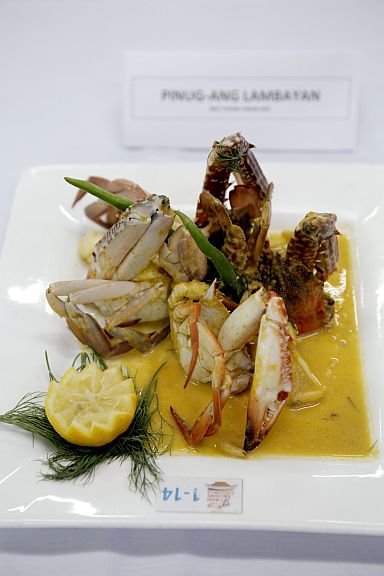
3rd place
– Pinug-ang Lambayan
This was served with special fried rice on a bed of sautéed ground beef with chickpeas, kidney beans in chili-oyster sauce and Pako salad on the side.
“Pako” or young fern is one of my favorite tender young leaves that are rarely found in supermarkets. We have to make a special trip to Carbon at night where a bundle wrapped in banana leaves cost P10 only, if available. The students blanched the pako, but I like to eat it fresh with tomatoes and salted eggs.
The University of Cebu-Banilad won first place with their entry “Chicken Breast in White Sauce with Sofrito.”
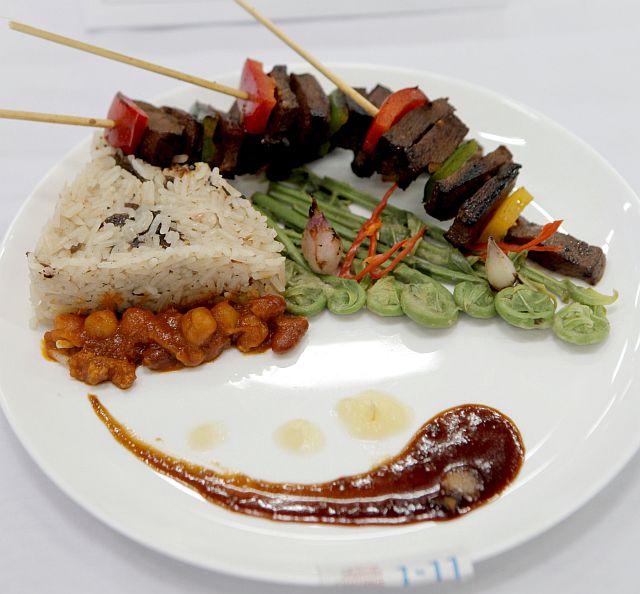
2nd Place –
Maumaming Lengua Inasal at Ensaladang Pako.
The deboned chicken breast was stuffed with kesong puti and flaked boneless bangus, wrapped in banana leaves and steamed.
Sofrito is actually a basic Spanish sauce that consists of garlic, onion, tomatoes and paprika sautéed in olive oil. Here, the students used achuete seeds instead of paprika, added fish sauce or patis and Ajinomoto Ginisa mix. The winning entries were all savory!
